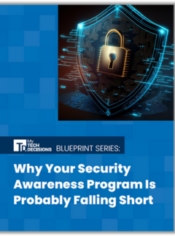When the COVID-19 pandemic began impacting organizations everywhere last year, it dramatically transformed the way we work.
New technologies that were seldom used like videoconferencing, unified communications and collaboration became the new way of working when employees were sent home to work for the long haul. However, it wasn’t just the office that became virtual.
Higher education institutions across the world became virtual overnight, and educators and students had to quickly adopt and learn these technologies.
As with the enterprise use of Zoom, Microsoft Teams, Google Meet and other video-based platforms, these technologies are opening new doors for learning that are expected to last long after the COVID-19 crisis is behind us.
Now, audio visual learning professionals are equipping every classroom with the devices and technologies needed to support both in-person and distance learning.
Expanding distance learning
In March, when schools were forced to shut down due to the rising number of cases, colleges and universities had to quickly formulate a distance learning plan.
“We literally had a week where we closed the university and said, ‘The next time we see our students, it will be online,’” says Doug Smith, director of learning spaces and audio/visual technologies at Illinois State University.
Now, as instructors, faculty and students get more familiar with these technologies, there is a minimum of a webcam installed on every instructor station.
The university went further and installed almost 50 tracking cameras in large classrooms around the campus, significantly upgraded its fleet of wireless microphones and deployed a number of other USB-enabled microphones.
These technologies allow for a mix of in-person and remote learning, both of which can happen simultaneously.
For institutions that want to expand and reach a more national or even global student base, audiovisual technologies allow them to do just that.
“This really kick-started the idea that distance learning opportunities for remote learning are real and far more attainable than a lot of folks thought it would be,” Smith says. “The fact that we could switch so quickly and continue to be successful just gives us a lot of hope that this is an opportunity to expand the university’s footprint and provide educational opportunities for more students.”
Read Next: Georgetown University Collaborative Remote Classroom
The new standard classroom
Now, the new standard classroom at Illinois State University will include the necessary technology for remote and in-person instruction.
“It has dramatically changed what we plan to do,” Smit says.
The same is true at the University of Southern California, where Joe Way is the director of learning environments and an expert in audiovisual technologies.
“I don’t think we can ever design a space without taking unified communications into account anymore,” says Way.
Like his counterpart in Illinois, Way said a fleet of PTZ cameras and high-quality microphones are the foundation for every classroom.
This allows not just for hybrid learning, but for asynchronous learning in which a lecture is captured on video and saved for students to watch outside of normal school hours.
Prepared for continuity of virtual education
At universities with the pedigree of USC that already attracts students from all over the world, this new standard helps improve upon the learning opportunities for students that don’t want to move to southern California.
For on campus, this also allows for the university to bring it outside subject matter experts for guest lectures in a highly accessible and intelligible format.
And now, USC and other institutions will be better prepared to support their students’ learning needs in the event of another global, national or local disruption.
“The odds of having another global pandemic are very small, but the odds that I’ll have an 8.0 earthquake here in Los Angeles are actually pretty big,” Way says.
Now, the school is better prepared to continue the work of providing a world-class virtual education even in the event of a disaster.
“Can we continue with virtual education? The answer is, ‘Yes.’”
If you enjoyed this article and want to receive more valuable industry content like this, click here to sign up for our digital newsletters!










Leave a Reply